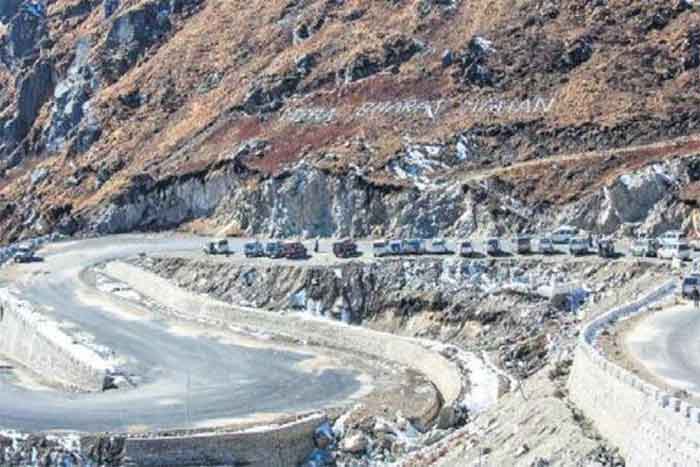
Roads have a very important role in Himalayan region and , adding together the state and union budgets, the budgetary allocations are also significant. However there are costly distortions in planning for roads. On the one hand we see an escalating craze for over-constructed highways and on the other hand we have a glaring shortage of essential roads in some habitations . As in other walks of life, there is a big inequality even in terms of access to roads!
To give an idea of the lack of adequate planning and coordination, we may mention a recent instance from Himachal Pradesh reported in local newspapers in which first tiles were laid down at a lot of expense and later these were dug up to lay down some pipelines which had been forgotten earlier as these had involved a different department and there was obviously lack of co-ordination.
The over-construction in the case of several highways often involves building much wider highways than are needed and the consequent felling of thousands of green trees that can be avoided. The available data of destruction of trees caused by highways in ecologically crucial Himalayan region, including catchment areas of the Ganga river is disturbing, to say the least, but in addition several hill-people whom I questioned in this context have told me that the official data is an underestimate of the actual loss. When a big tree is felled often some of the nearby smaller trees are also damaged and then felled after being shown as damaged or not shown at all. At the same time as there is wastage in the form of over-construction, there is sometimes cutting of funds relating to works that are essential for protecting from landslides, with the result that the threat from landslides increases and some human settlements near the highway are threatened. Having spoken to people threatened in this way I can assert with confidence that this danger can be very serious at times, but remedial steps are not taken or delayed too long and there is a tendency to deny the link between this new hazardous situation and the highway project. There are new landslide zones and landslides due to such faulty construction and the resulting traffic jams, although highways are built in the same of speeding up traffic. Many of these distortions are in turn related to corruption.
At the other extreme we have a pathetic situation in many villages where there is no road and so patients have to be carried across several miles of difficult steep track on cots or on back of a family member. Heavy loads of farm produce are also sometimes carried on back.
Incidents of fire have been increasing in several Himalayan villages but absence of roads means that fire extinguishers cannot reach here. A recent report in the Tribune mentioned several villages in Kullu Valley which have been destroyed by fire in with lack of roads playing an important role. These villages include Mohini, Kotla, Jindi and Narogi.
There have even been instances of debris of over-constructed highways falling on village paths and these paths becoming more dangerous and less usable than before. In more interior areas the poor condition of roads often becomes a factor resulting in accidents. With increasing floods such risks are likely to increase.
Clearly planning for roads in Himalayan region and other hill regions needs to improve in significant ways with better prioritization to help people, check ecological ruin and reduce wastage.
Bharat Dogra is a journalist and author. His recent books include Vimla and Sunderlal Bahuguna—Chipko Movement and the Struggle Against Tehri Dam Project.
GET COUNTERCURRENTS DAILY NEWSLETTER STRAIGHT TO YOUR INBOX
Related posts:
Views: 0
 RSS Feed
RSS Feed

















 May 21st, 2021
May 21st, 2021  Awake Goy
Awake Goy 



 Posted in
Posted in  Tags:
Tags: 
















